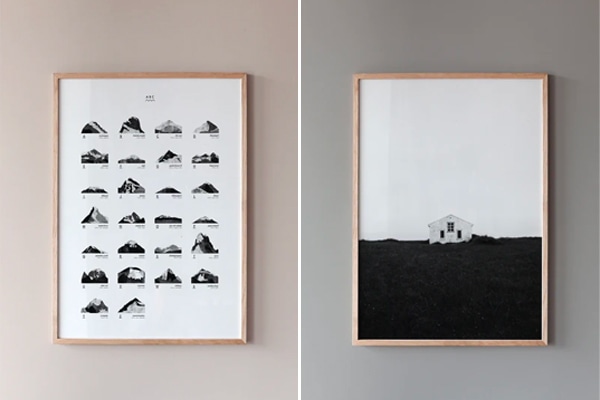The CH24 Wishbone chair production: A Peek Inside the Carl Hansen & Søn Factory

Last month I traveled to Denmark to visit the Carl Hansen & Søn factory in Gelsted, Denmark. Throughout the years, the brand has had a strong focus on preserving Danish design classics to gather the best, most iconic modern furniture designs under one roof.
What makes their iconic furniture pieces truly unique is the craftsmanship with which they are created. Each piece of furniture requires hours of handcraft before it leaves the factory.
The factory is one of the most modern furniture production facilities in Northern Europe, with a focus on craftsmanship and sustainability. It has 550 employees and the level of skills that go into the production of the furniture pieces is something I was so impressed by.
During my visit, I was able to take a closer look at the production process of the CH24 Wishbone chair, a true Danish Design icon made by Hans J. Wegner in 1950 and still today one of the most recognizable chair designs out there.

The Apprentice workshop: forming the Future of Craftsmanship
Since quality craftsmanship is the foundation of Carl Hansen & Søn, training more cabinet makers and craftsmen is of the utmost importance to the brand. With the brand’s apprentice workshop, they can meet growing demands and preserve the craftsmanship in Denmark.
The apprenticeship training takes almost 4 years, combining periods in the apprentice workshop, at technical college, and in production. Their first project is a toolbox for their woodworking tools, which is made with a handsaw and traditional supplies. They learn to make different kinds of joints, such as finger and dovetail joints, sanding methods, cut-outs, weaving, and many more machine and hand skills.


The apprentices also learn how to make fixtures for internal use, and how to restore vintage furniture and create commissioned pieces. The combination of these tasks provides them with a versatile skill set.
The apprentices are trained to work with projects that they have to manage from start to finish. They thereby gain an in-depth understanding of the possibilities and challenges of the cabinetmaking trade.


FSC-certified wood: the most important Source Material
Almost the entire collection of Danish design classics is manufactured in the Gelsted factory, except the outdoor collection, which is produced in the Carl Hansen & Søn factory in Vietnam.
The sawmills that provide the source material for the factory have long-lasting relationships with the brand and some supply the factory with the best quality wood since the 1950s. Only the best quality from the inner parts of the trunks are used and all the wood is FSC-certified.
The brand calculates how much wood will be needed for the next year and sawmills from different locations supply the raw materials. Oak wood is typically sourced within the EU, Beechwood within Denmark, and walnut from the US.

The production process of the Wishbone chair
I have talked about the CH24 Wishbone chair designed by Hans J. Wegner and its place inside many modern and classic interiors before and it was such a treat to be able to take a peek behind the scenes and see how they craft their iconic design pieces.
The CH24 wishbone chair has the iconic Y-shaped back and a woven paper cord seat, which has become a famous design icon that has been in continuous production ever since it was brought onto the market in 1950.
The paper cord seat alone takes a skilled craftsman 1 hour to complete and that’s only the last step in the production process to create this truly iconic piece.

Production and sanding of the pieces
The iconic form of the chair involves the production of 14 different parts, including a steam-bent top and the paper cord seat. Each of the parts is sanded during the manufacturing process and inspected thoroughly by skilled craftsmen.
We were able to try out sanding the authentic wishbone chair parts and it is so much more difficult than it looks.


Assembly of the Wishbone Chair or Y-chair
After sanding down the pieces, they are assembled the traditional way using only glue and no screws. Some of the chairs from the Carl Hansen & Søn collection take 20 minutes to assemble, and some take 5 hours, depending on the complexity.
The skilled craftsman uses a variety of different tools to assemble the Wishbone chair and at the end, the CH24 chair is placed underneath blue light to check for any glue residue, as this will show as a dark spot after oiling.
Each chair is stamped with an employee number so that on the rare occasion a chair comes back to the factory with a mistake, the same employee can fix the piece and learn from their mistake.



Applying the paper cord seat
The last step of the production of the Wishbone chairs, after oiling or painting, is the weaving of the iconic natural paper cord seat. 150m of paper cord goes into the seat of one chair and it takes about 1 hour to weave the Wishbone chair, while other more complex pieces like the Faaborg Chair might take up to 1,5 days to complete.
To avoid having to pull through 150m of chord every time, each of the paper chord pieces is 7m long and a knot is tied that can be hidden and will never loosen.


Carl Hansen & Søns commitment to sustainability
Apart from sourcing wood from responsibly managed forests and the fact that their iconic pieces are made to last a lifetime, the factory reuses wastewater in the factory and makes sure every bit of wood is reused in some way.
Smaller wood pieces left after manufacturing the furniture pieces are made into an accessory line specially designed for this purpose, but even the smallest wood shavings don’t get discarded.
The brand repurposes the little scrap that remains as fuel in a district heating plant that provides warmth to more than 400 local homes in Gelsted.

Ad – I was invited on a press trip by Carl Hansen & Søn

































































































































































